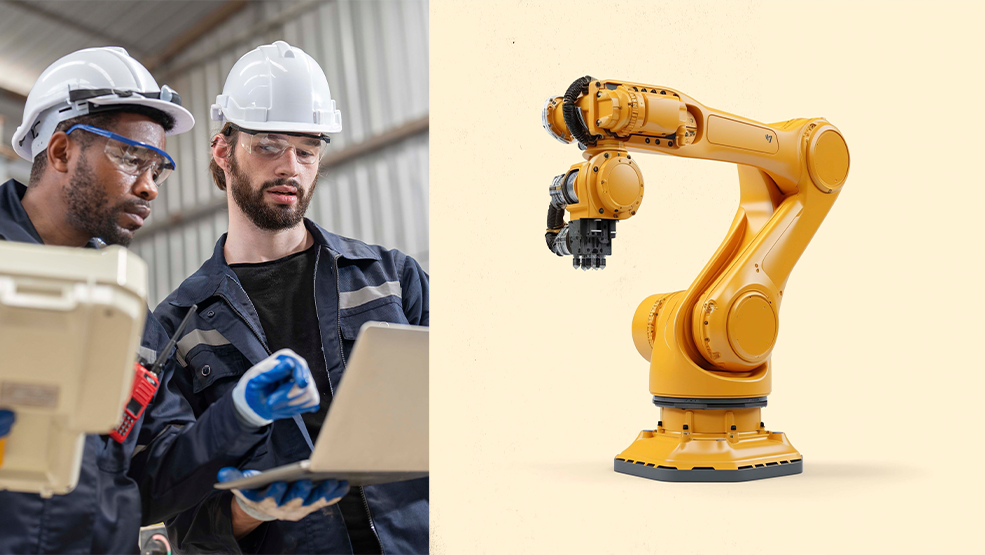Are you a discrete manufacturer? Then you know how complex the manufacturing process of discrete products is. You are responsible for supervising tasks such as managing relationships with both the supplier and customer, ensuring quality, and balancing inventory expenses.
Every function of the discrete manufacturing process, from product design to production, is too complex to handle manually without the support of digital tools.
What if there is a tool that can simplify the process of producing discrete products, making it more efficient and effective?
Read this article to learn how you can transform your discrete manufacturing operations so that you can stay competitive in today’s market.
What is discrete manufacturing?
Discrete manufacturing deals with the production processes that turn raw materials into finished products. It involves building, assembling, and fabricating parts to create a finished product. Due to these reasons, there is a complex workflow process.
We cannot simply say that it is manufacturing parts and assembling them to produce a product. It involves many components, such as brackets, nuts, bolts, and assemblies.
Examples of discrete manufacturing include:
- Electronics
- Airplanes
- Toys
- Furniture
- Vehicles
- Cabling
The difference between discrete and process manufacturing
Still having trouble defining discrete manufacturing?
Let’s take a look at the difference between discrete and process manufacturing to gain a little more clarity.

Consider an airplane and shampoo as examples. The chemical reaction between various ingredients results in the production of shampoo. Here the final product, shampoo, cannot be broken into its ingredients or components. These products are produced and sold in large quantities.
The airplane, however, is made up of a number of distinct parts that are assembled. Therefore, the aircraft can be disassembled into its components. The manufacturing of aircraft begins after considering the needs of the market only. So, they are usually produced in small quantities.
An aircraft is an example of discrete manufacturing, while shampoo is an example of process manufacturing. And that’s the difference between discrete manufacturing and process manufacturing.
Key components of discrete manufacturing
The key components of discrete manufacturing are product design, planning, development, quality control, and inventory management. Let’s briefly examine each one in order to gain additional insight!
1. Product design and development
The first step in discrete manufacturing is product design and development. But before you design a product, you must do market research and look at customer feedback. After that, you can start working on the product based on its function and the manufacturing processes involved.
2. Planning and scheduling
Product planning involves determining the number of products that should be manufactured in a given period while scheduling focuses on arranging the production of individual products on specific production lines.
When discussing planning and scheduling, we cannot avoid the need to properly coordinate the project. Coordinating all the parts, machines, materials, and the workforce involved in production plays a vital role in delivering a product successfully. Once a unit is scheduled to be assembled, you can expect that something will happen before completing the process. You must expect the unexpected, nothing ever goes to plan.
For example, a machine may stop working, raw materials may be unavailable, or the assigned worker might be out sick. Besides that, you need to know which element of which product is undergoing the manufacturing process, and planning assists in that.
Therefore, planning and scheduling are necessary in order to clearly map out the process of manufacturing a discrete product and reduce the risks associated with the production process.
3. Production management
As we discussed, scheduling helps mitigate the risks associated with the scheduling of discrete management. However, if scheduling conflicts arise, businesses need to be ready to face them. This is where product management comes in.
Common barriers to the production of discrete products are workers calling in sick or getting injured. And it is not just limited to human resources, without proper preventative maintenance, equipment could shut down suddenly and cause unnecessary disruptions in production.
Whatever the disruptions may be, you should be ready with alternatives to address the situation. In that regard, what you can do is regularly check the machinery for problems. Always have a backup plan in place for overcoming out-of-the-blue challenges.
4. Inventory management
You must already know how important inventory management is in monitoring warehouse operations. If not, let us look at a scenario to help you better understand. Take the example of electronics, one of the essential parts of electronics is wires.
Worker 1 empties a truck of 50 boxes of wires and places it near the front of the warehouse. Worker 2 takes 10 boxes and puts them elsewhere.
Worker 1 finds that some of the boxes are missing but now has no idea who took them and where they are located.
This is where inventory management comes in. Without inventory management, worker 1 has to go and ask everyone in the warehouse about the missing boxes of wire. Even if he finds worker 2 and gets the information, locating boxes in the warehouse is not easy without an identification and box number.
Inventory management lets you track everything in the warehouse, from orders to raw materials in stock and even finished products. It also has a record of materials movement within the warehouse.
5. Quality control
Finally, the most important component of discrete manufacturing is quality control of the parts and raw materials. We know the production process of discrete manufacturing is complex because of harsh surroundings, prolonged workflow processes, heavy machinery, and inadequate maintenance.
These conditions place the safety of the workers and the product at risk. So, the primary duty of discrete manufacturers is to document the results of warehouse inspections, equipment checks, and product management reports. Documenting these outcomes helps maintain quality and gives insight into the countermeasures performed in order to avoid unwanted disruptions.
In light of that, discrete manufacturers can incorporate IoT(Internet of Things) into their workflows. IoT is reshaping the field service industry in every way we know. Using IoT devices, you can record and maintain all aspects that affect the quality of discrete products.
Conclusion
The success of a discrete manufacturing process depends on its workflow and how the key components move smoothly from product design to quality inspection. If you have difficulty keeping the workflow clean and straight, you can always use FSM software to simplify your field service operations.
If you are a manufacturing enthusiast, subscribe to our newsletter and stay up-to-date with the latest manufacturing industry trends.









